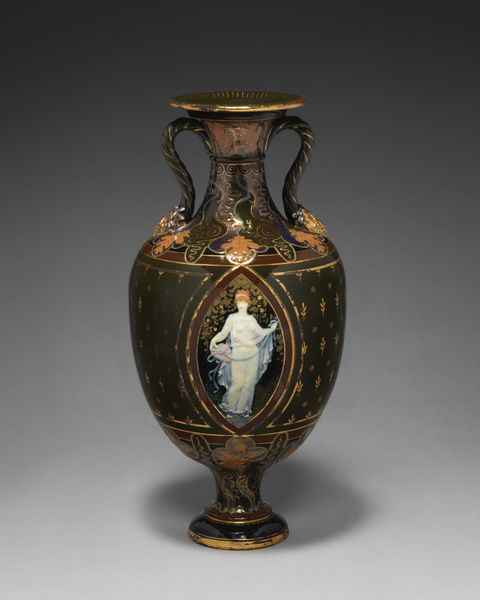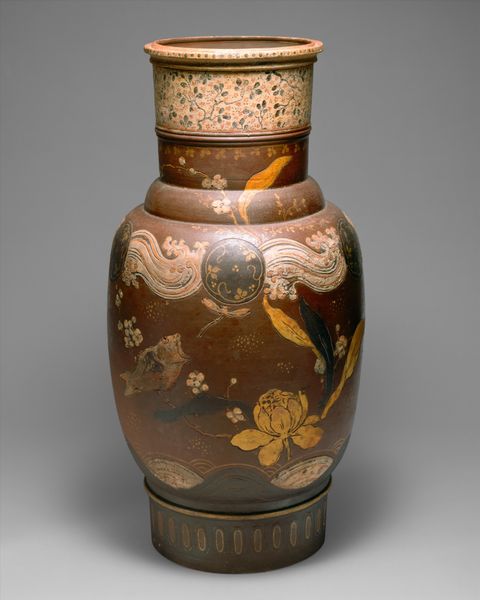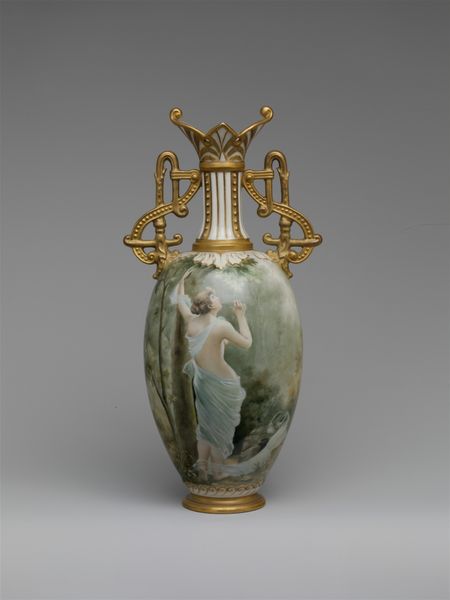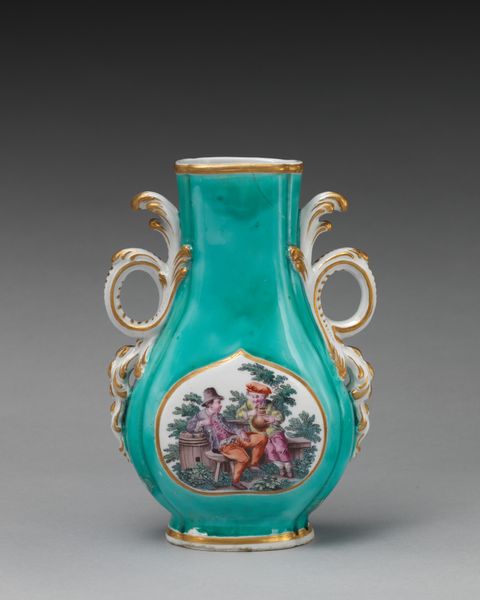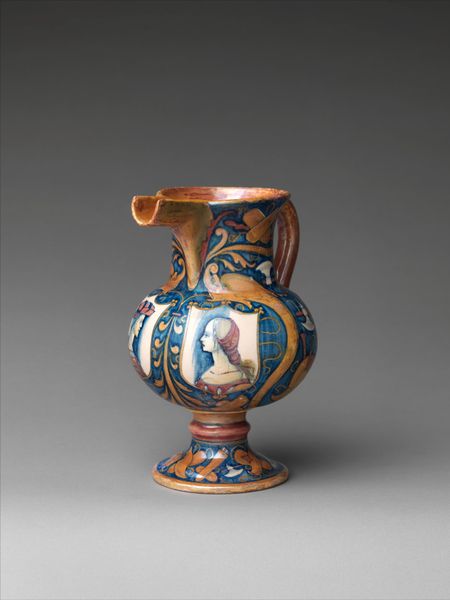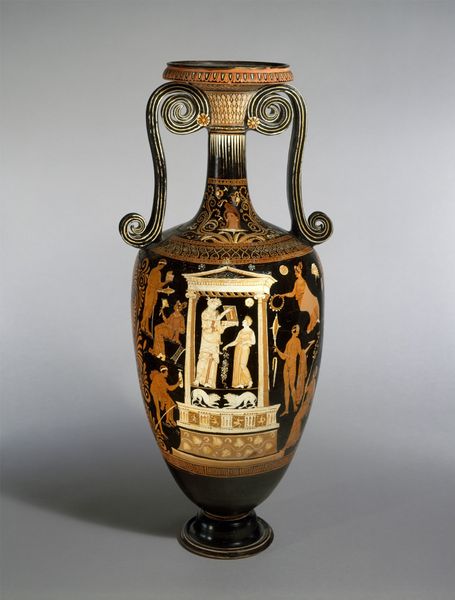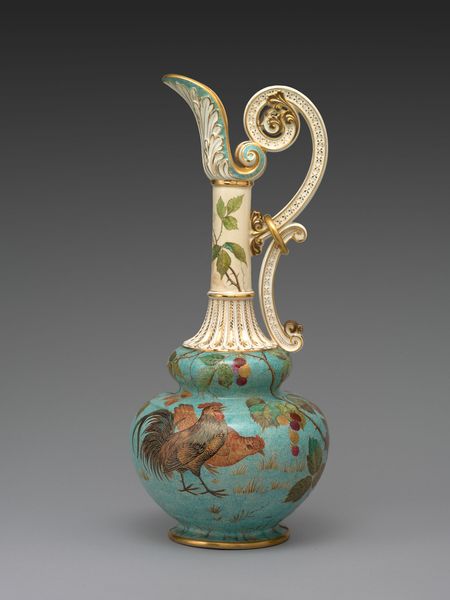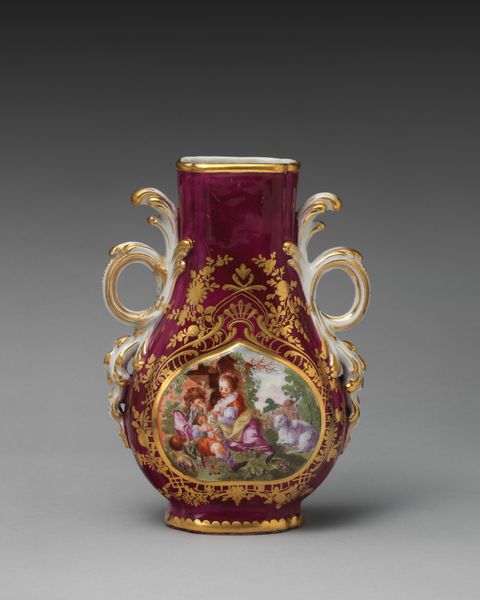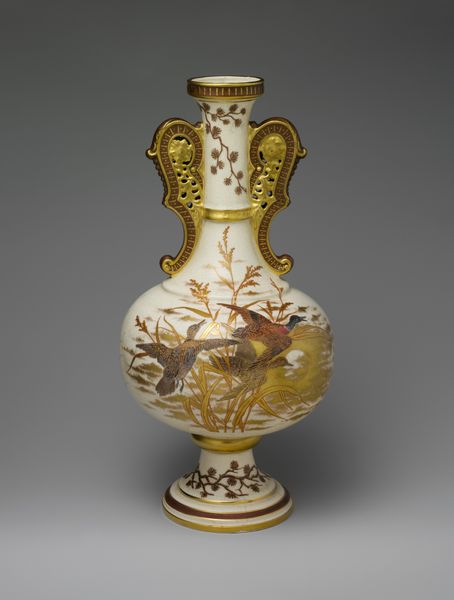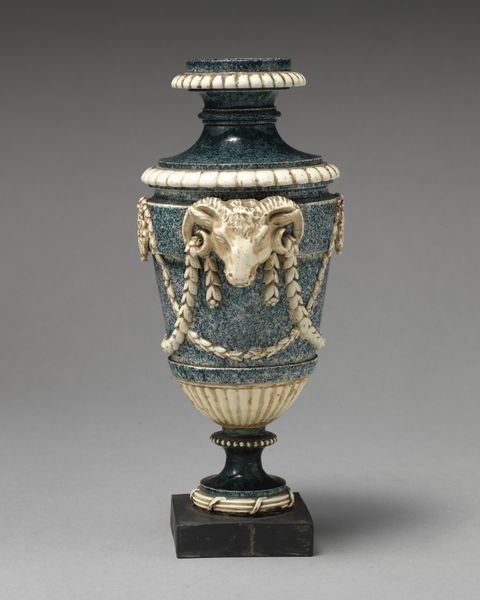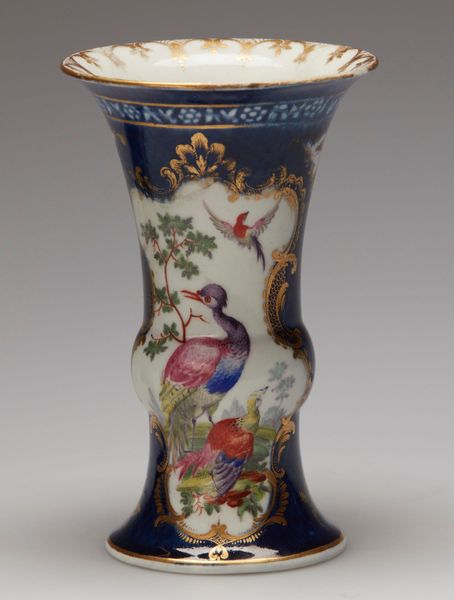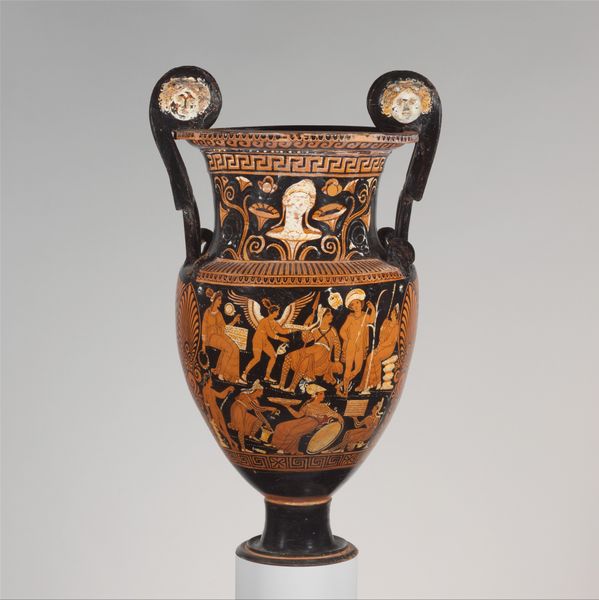
Dimensions: confirmed: 24 × 10 5/8 × 10 5/8 in. (61 × 27 × 27 cm)
Copyright: Public Domain
Curator: Here we have a ceramic vase, created in the 19th century by Haviland & Co. Editor: It's beautiful. The form is elegant, and the figures feel buoyant against the deep, earthy tones of the landscape surrounding them. Curator: Haviland & Co. was known for embracing innovative ceramic techniques. The tempera medium and the sculpted details speak to a fascinating crossover between industrial production and artistic craft during the period. What does that juxtaposition evoke for you? Editor: Well, viewing this today at the Metropolitan Museum of Art, it feels as if we're meant to see this not simply as a decorative object, but to think about how taste was constructed and the aspiration toward classicism for a rising bourgeoisie at that time. Note the idealized figures seemingly lifted from a Rococo painting, right? Curator: Exactly! It really blurs the line between art object and mass-produced good. You see figuration paired with landscape elements, seemingly printed or perhaps painted on. The ruffled lip of the vase, juxtaposed with the industrial-feeling base… There's a conscious effort to elevate ceramics. Editor: And one can't ignore the narrative. This image of the allegorical mother with the torch, is symbolic, wouldn’t you agree? The art and social values are very pronounced here. Curator: Definitely. It underscores the performative aspect of wealth and status. Think about how this object was marketed, how it was displayed in homes, and who had access to it. Editor: A complex interplay of artistic intent, societal values, and material execution, all contained within this stunning object. Curator: Indeed, a lasting testament to the creative tensions of its era.
Comments
No comments
Be the first to comment and join the conversation on the ultimate creative platform.
